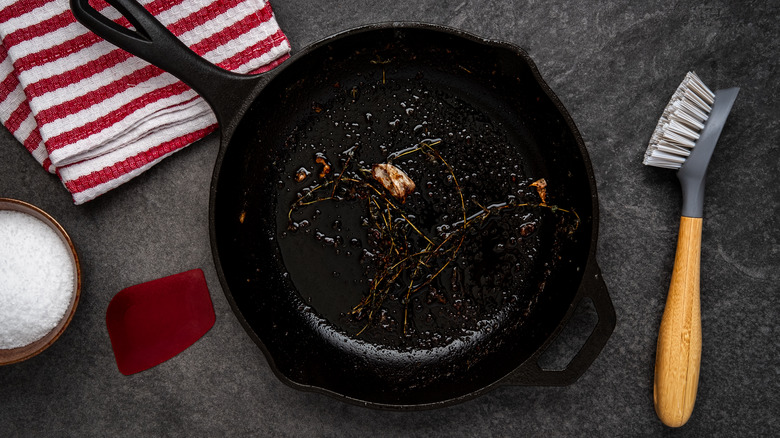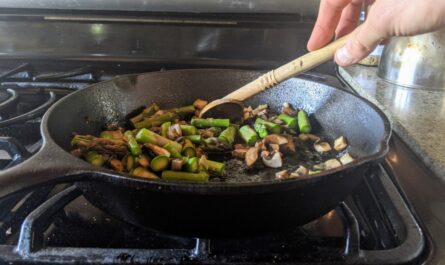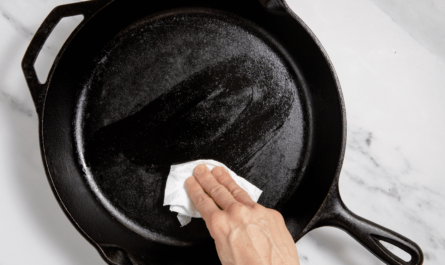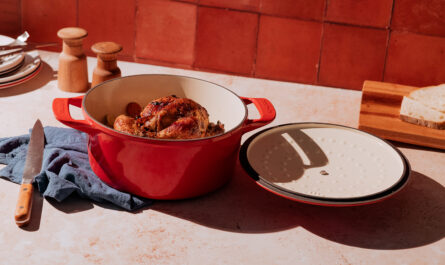A cast iron skillet is more than just a cooking tool; its a kitchen treasure that lasts for generations when given proper care. If your skillet has rust, is losing its seasoning, or just needs a little care, don’t worry! Learning how to restore cast iron skillet is simpler than it sounds, and we are here to guide you through each step. Whether you’re prepping for your next big sushi night or a hearty steak dinner, this guide will help you enjoy the full potential of this timeless kitchen asset.

Why Is Restoring Your Cast Iron Skillet Important?
If youve ever wondered why chefs and home cooks swear by cast iron, youll be delighted to learn about its durability, heat retention, and ability to impart flavor. However, even the best cookware can lose its charm if not maintained. Rust, for example, can ruin the seasoning and make food stick. Restoring your pan not only enhances its longevity but also makes cooking a joy again.
What Youll Need to Start Restoring Your Skillet
- Fine steel wool or a scrubber
- Dish soap (mild, non-abrasive)
- Vegetable oil, flaxseed, or canola oil
- Non-scratch sponge
- Aluminum foil or parchment paper
Step-by-Step: How to Restore Cast Iron Skillet
1. Assess the Damage
Start by evaluating your skillet. Is it covered in rust, sticky debris, or just losing its smooth finish? Once you know the condition, you can gear up with the right tools to fix it.
2. Removing Rust: A Critical Step
Rust is the most common villain in the cast iron world. To remove it, scrub your skillet with fine steel wool until the surface feels smooth. Rinse completely to wash away debris.
Need help cooking after the restoration? Check out our detailed guide: Dry aged ribeye.
3. Washing And Drying Correctly
Use mild dish soap and warm water to wash the skillet. Dry it immediately with a towel; leaving it air-dried can introduce new rust.
4. Re-Seasoning: Bringing Back The Shine
Coat your pan with a thin layer of vegetable oil all over, including the handle. Place it upside down in a preheated oven at 450F for one hour. Remember to place foil underneath to catch drips.
Need dinner ideas to test it? Start with this mouthwatering suggestion for Simple cast iron salmon.
5. Long-Term Care Tips
Ensure you always dry your skillet after washing! Avoid cooking or storing acidic foods as they can strip the seasoning. Learn how to perfect cooking chicken as a practice dish: Chicken wings timing.
Common Mistakes in Restoring a Cast Iron Skillet
To keep your skillet as good as new, avoid these pitfalls:
- Using harsh, abrasive scrubbers beyond steel wool.
- Skipping drying steps, which invites rust.
- Applying too much oil during seasoning leads to sticky residue.
Trying Sushi with Restored Cast Iron
Ever thought of searing fresh seafood for sushi? A well-seasoned skillet could elevate your sushi-making nights. Try it with halibut: Halibut guide.

FAQ Section
1. Can I use soap on a cast iron skillet?
Yes, mild dish soap can be used, but avoid harsh detergents that strip the seasoning.
2. How often should I re-season my skillet?
If you use it frequently, re-season every few months or when food starts sticking.
3. Can cooking acidic foods ruin the seasoning?
Extended exposure to acidic foods like tomatoes does wear down the seasoning gradually, so its best used sparingly.
This article contains affiliate links. We may earn a commission at no extra cost to you.




